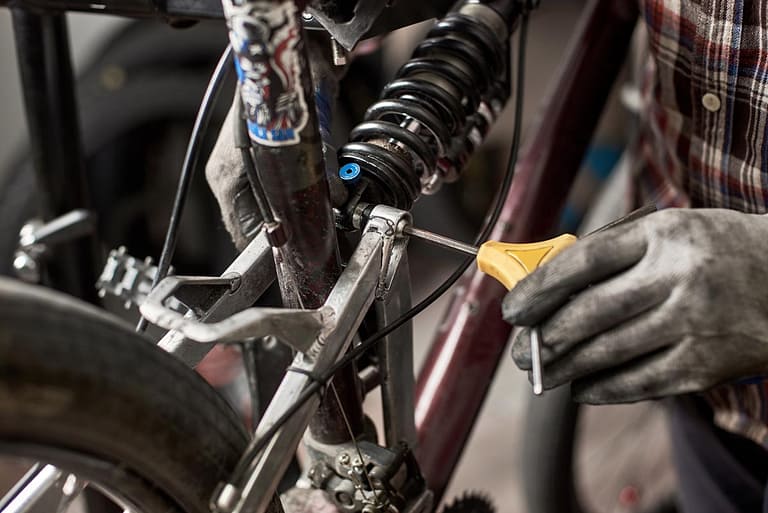Racing BMX: The Thrilling World of Dirt Track Battles
BMX racing is an exhilarating sport that combines speed, skill, and guts. It’s all about racing bicycles on dirt tracks filled with jumps, bumps, and berms. And it’s a total blast to watch or do yourself!

The History of Racing BMX: From Local Tracks to Global Phenomenon
BMX started way back in the late 1960s. Kids were into customizing their Schwinn Sting-Ray bikes to look like motocross motorcycles. They called them “wheelie bikes.”
Then in the early 1970s, BMX racing really took off in Southern California. Riders would race on dirt tracks with all kinds of obstacles. The sport spread across the US and then around the world.
Some key milestones:
- 1974: The National Bicycle League (NBL) was founded to govern BMX racing
- 1981: The International BMX Federation (IBMXF) was created
- 1993: BMX racing became part of the Union Cycliste Internationale (UCI)
- 2008: BMX racing debuted as an Olympic sport at the Beijing Games
Racing BMX Track Anatomy: Straights, Berms, and Jumps
A typical BMX track has these main features:
- Starting gate – Where up to 8 riders line up side-by-side
- Straights – The flat sections between turns and jumps
- Berms – Banked corners that riders rail around
- Jumps – Doubles, triples, tabletops and step-ups that send riders flying
- Rhythm sections – Rollers and whoops to pump through
- Finish line – Where the first rider across wins!
Tracks are usually 900 to 1,200 feet long. Races last 30 to 40 seconds. It’s short but intense!
Racing BMX Bike Setup: Frames, Components, and Gearing
BMX race bikes are built tough for rough terrain. But they’re also engineered for speed:
- Frames are made of chromoly steel or aluminum
- Wheels are strong 20-inch with aluminum rims
- Tires have knobby tread for grip
- Handlebars are usually alloy for strength
- Cranks are stiff for max power transfer
- Pedals can be clipless or flat
- Gearing is a single chainring up front and cassette in back
Racers dial in their bike position for ultimate control and efficiency. A pro BMX bike costs $1500 and up.
Essential Racing BMX Skills: Starts, Pumping, and Cornering
To go fast on a BMX track, you need to master some key techniques:
- Gate starts – Timing the snap out of the gate is critical
- Pumping – Using the arms and legs to generate speed on hills
- Cornering – Leaning the bike over in the berms for max traction
- Jumping – Boosting off lips and landing smoothly
- Passing – Finding the best lines to get around other riders
The difference between winning and losing is often just hundredths of a second. So every move counts!
Racing BMX Training: Building Speed, Power, and Endurance
Top BMX racers train hard on and off the track:
- Sprints build explosive speed and power
- Plyometrics improve jumping and pumping force
- Weightlifting increases strength
- Cardio boosts endurance for multiple laps
- Skills practice perfects technique on the bike
- Mental training optimizes focus and confidence
A solid training plan can give racers the edge when it’s time to hit the track.
Racing BMX Competitions: From Local Races to World Championships
There are BMX races happening all the time, all over the world:
- Local races at tracks in towns everywhere
- State and regional championships crown the best in the area
- National championships in countries worldwide
- UCI World Cup elite international series
- UCI World Championships the pinnacle of the sport
- Olympic Games the ultimate stage every 4 years
USA BMX and the UCI oversee most of the official races. Points earned at sanctioned events move riders up the rankings.
Racing BMX at the Olympics: The Ultimate Stage for Elite Riders
BMX racing joined the Olympic program at the 2008 Beijing Games. The competition features men’s and women’s individual races.
Riders battle through quarterfinal and semifinal rounds to make the final. The racing is intense, with crashes and photo finishes.
Team USA has won 6 Olympic BMX medals, including 3 golds:
- Connor Fields – Gold (2016)
- Mariana Pajon (Colombia) – Gold (2012, 2016)
- Maris Strombergs (Latvia) – Gold (2008, 2012)
Legendary Racing BMX Athletes: Champions and Trailblazers
Some of the greatest BMX racers of all time:
| Rider | Achievements |
|---|---|
| Greg Hill | 10x NBL champion, “The Biker Sherlock” |
| Gary Ellis | 14x British champion, 1st Black #1 pro |
| Eric Rupe | 17x ABA champion, most all-time |
| Mariana Pajon | 2x Olympic gold, 9x world champion |
| Shanaze Reade | 3x world champion, 2x Olympic finalist |
| Alise Willoughby | 2x world champion, Olympic silver |
| Connor Fields | Olympic gold, 2x world champion |
These legends pushed the limits and inspired generations of riders.

The Racing BMX Community: Clubs, Events, and Sportsmanship
BMX racing isn’t just a sport, it’s a lifestyle. Riders form tight-knit communities around their local tracks.
There are hundreds of BMX clubs and teams around the world. They organize practices, road trips, and social events.
Big races draw thousands of riders and spectators. The atmosphere is electric, with cheering crowds and intense competition.
But off the track, it’s all about fun and friendship. BMX is known for its camaraderie and sportsmanship.
Racing BMX for Beginners: Getting Started in the Sport
Want to try BMX racing? It’s easier than you might think! Here’s how to get rolling:
- Find a local track and go watch a race
- Visit a BMX shop and get a bike that fits you
- Gear up with a helmet, pads, gloves, and jersey
- Sign up for a clinic or camp to learn the basics
- Enter a novice race and have fun!
You don’t need a fancy bike or a ton of experience to get started. BMX is all about progress, not perfection.

